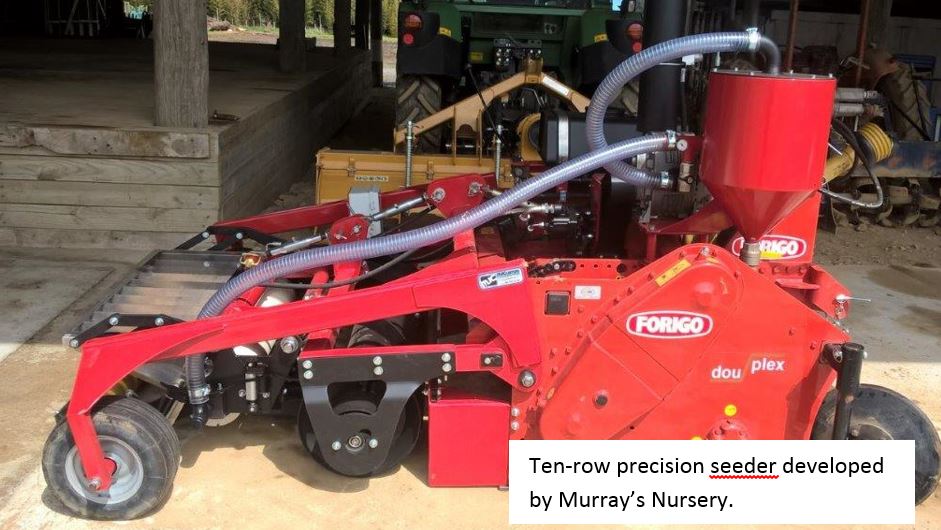Nursery and Seedling Optimisation – Video
- In:
- 2017 Forest Growers Conference
- Report No:
- AC2017-14
- Report Date:
- October 18, 2017
- Author(s):
- Simeon Smaill: Scion; Patrick Murray: Murray Nurseries
Bio stimulants to Boost Productivity
Nursery and Seedling Optimisation – Patrick Murray, Murray’s Nurseries
1. Nursery and seedling optimisation
Conference presenter: Dr Simeon Smaill, Scion
Presentation: Nursery and Seedling Optimisation
Current nursery management research is building on work started several decades ago into the benefits of ectomycorrhizae (ECM). ECM are fungi which form associations with tree roots and promote plant growth and health.
Research into current conventional nursery practices involving the routine application of fertilisers and fungicides has shown that these chemicals change ECM composition and plant growth. Trials have progressed from experimental to operational scale at commercial forest nurseries and now have moved to forest plantings.
A body of convincing evidence is building: lower inputs of fertilisers and fungicides in the nursery result in healthier seedlings with above average survival and growth rates once the trees are planted out in the forest.
The next phase of research involves the use of biuret, a novel growth stimulant, which can be applied at much lower rates than conventional urea fertiliser, and may stimulate the uptake of nutrients by seedlings in the forest (see Section 4).
The outcomes of this research for both the nursery industry and forest growers include growth gains, cost savings, and environmental benefits, enhancing the industry’s licence to operate.
Nursery management: future research
Scion has consulted with several nursery leaders and identified the following priorities for current and future research:
- new ways of providing direct benefits to plants via the nutrient cycle (e.g. N fixation, stress tolerance)
- automated tissue culture production, including reliable integration of beneficial microbes
- automated physical processes in nursery settings – chemical handling, inventory, lifting and grading.
Additional topics potentially suitable for Forest Growers Levy Trust funding to extend research further:
- potential to use new N supplements for weed control
- testing specific fungicides against beneficial mycorrhiza
- improving links between nurseries and forest growers.
2. Murray’s Nurseries: low input and innovative nursery management
Conference presenter: Patrick Murray, Murray’s Nurseries
Murray’s Nurseries, based in Woodville, produces five million radiata pine seedlings per year. Manager Patrick Murray is experimenting with a range of low input practices, and is convinced of the benefits in terms of both the quality of the trees produced, and to the business as a whole.
By 2016, the nursery was using zero fungicides; in the 2017 season, which was very wet, some spraying for botrytis was undertaken. However, the nursery now only applies fungicides reactively, unlike many nurseries which continue to operate preventative spray regimes.
Other innovative approaches taken at Murray’s Nurseries include:
- adding Trichoderma fungi (a bio-stimulant) (see Section 3), with a specially developed machine which injects the compound during root-topping
- increasing levels of mechanisation, automation and self-sufficiency – one important aim being to reduce the biosecurity risks associated with contractors’ machinery
- developing a precision seeding machine
- greatly reducing fertiliser use, and seeing much enhanced mycorrhizal activity as a result
- experimenting with radiata pine cuttings as well as seedlings.

Murray’s Nurseries collaborates with a number of research and development organisations, and is closely involved with many facets of the forest industry.
- Document:
- 15 Nursery and seedling optimisation_S Smaill (2.31 Mb)




